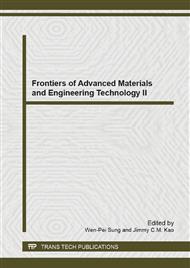p.1851
p.1855
p.1859
p.1865
p.1874
p.1879
p.1884
p.1888
p.1892
Comprehensive Evaluation of Implementation Effect on Later-Period Supportive Policy of Reservoir Resettlement Based on ANFIS
Abstract:
According to engineering features of later-period supportive policy on reservoir resettlement, Economic evaluation index system of implementation effect on later-period supportive policy of reservoir resettlement is built to assess the implementation result of reservoir resettlement policy effectively in recent years. Considering the complexity of the evaluation index and the nonlinear characteristics of evaluation process, it is built that the comprehensive evaluation model of implementation effect on later-period supportive policy of reservoir resettlement based on ANFIS(Fuzzy artificial neural network) to provide the decision-making reference for implementation and improvement of later-period supportive policy of reservoir resettlement.
Info:
Periodical:
Pages:
1874-1878
Citation:
Online since:
April 2014
Authors:
Price:
Сopyright:
© 2014 Trans Tech Publications Ltd. All Rights Reserved
Share:
Citation:


